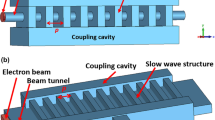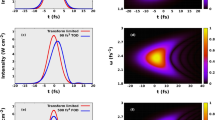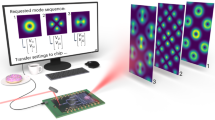Abstract
WE have constructed a high-voltage cathode ray tube in which the beam excites the entire screen surface simultaneously and uniformly; the peak beam-current may exceed 100 m.amp. for short periods without damage either to the cathode or the phosphor. The intensity and duration of the electron beam-pulse are controlled by the grid, complete cutoff being possible without removal of the anode voltage. By a suitable choice of screen phosphor (a zinc oxide supplied by Messrs. Levy-West) the form of the light pulses may be made to follow that of the control signal up to frequencies approaching one megacycle per second.
This is a preview of subscription content, access via your institution
Access options
Subscribe to this journal
Receive 51 print issues and online access
$199.00 per year
only $3.90 per issue
Buy this article
- Purchase on SpringerLink
- Instant access to full article PDF
Prices may be subject to local taxes which are calculated during checkout
Similar content being viewed by others
Author information
Authors and Affiliations
Rights and permissions
About this article
Cite this article
DUDLEY, M., WHITNEY, I. & FEINBERG, R. A High-Intensity Light Source for Stroboscopic Operation at Frequencies up to 250 kc./s.. Nature 179, 1024 (1957). https://doi.org/10.1038/1791024a0
Issue date:
DOI: https://doi.org/10.1038/1791024a0



